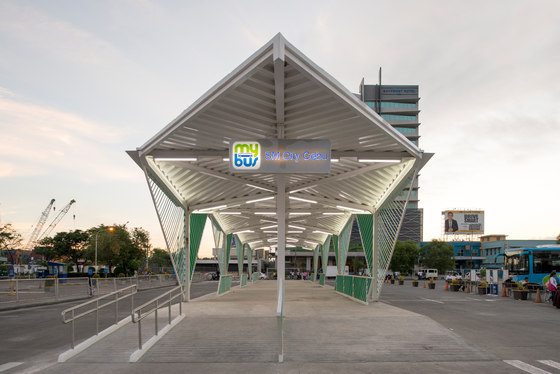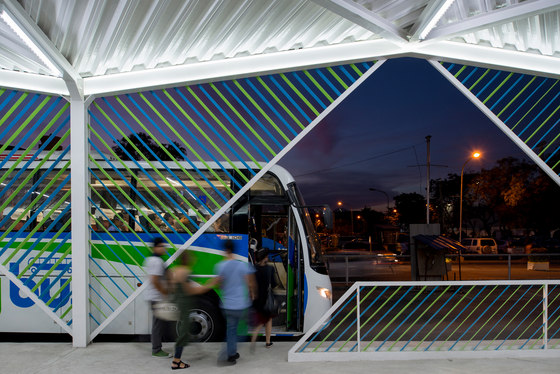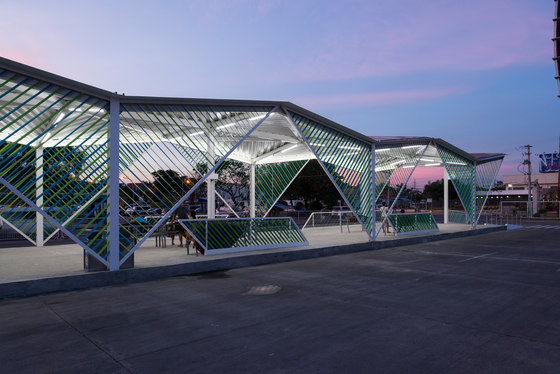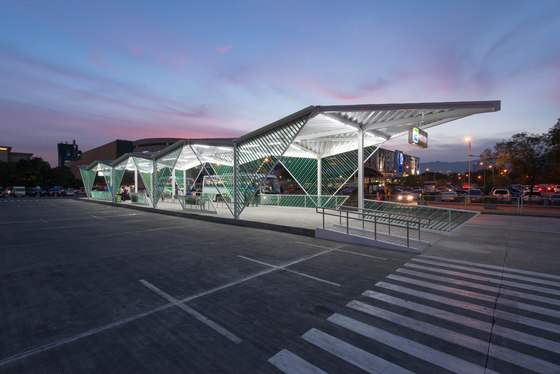Brooklyn-based architecture and design firm, CAZA (Carlos Arnaiz Architects), with offices in Bogota, Colombia;; Lima, Peru;; and Manila, Philippines, is pleased to announce their newest public works project, a Bus Rapid Transit (BRT) station in Cebu, Philippines. This is the first major public transit system to ever be developed in Cebu, which has a population of roughly 3.5 million people. The system will serve 15 – 25% of the population, which will facilitate transportation and alleviate congestion for nearly one million citizens. As of May 2016, five of the nineteen stations have been built and are operational.
This modular system of bus stations takes its design from ancient basket weaving traditions of Cebu, while integrating a mixture of much needed improvements to Cebu’s public transit system. The Cebu BRT project will significantly improve sidewalks, crosswalks, and public lighting throughout the streets of Cebu, while also addressing some serious problems, such as damaging street flooding. Each roof acts as a water catcher, and is able to direct the rainfall from intense rainstorms away from the street, alleviating the stress of rain on the streets and sidewalks. At the same time, the roof also acts as a source of shade, shielding civilians from the intense heat and extreme weather that is characteristic of certain times of year in the Philippines. While this project significantly improves the public transit system, it also keeps in mind the human condition, making new infrastructure into a cultural icon for Cebu city.
Carlos Arnaiz, Principal of CAZA states, “The Cebu BRT is really the first transit system of its kind in the Philippines, that services an entire metropolitan area connecting a historic district with the international airport and fast-growing regions on the periphery. The project marks a landmark for a country struggling to figure out how to improve the lives of its citizens and resolve transportation challenges with limited resources.” As part of the project, CAZA was tasked with not only building this interconnected system of bus stations, but designing the landscaping and furniture around each station. While stations vary in size and scale, each station consists of a standardized system of furniture, such as planters and benches. This seamless and consistent design decision was integral to the overall goal of the project: to connect four unique cities through one revolutionary transit system.
CAZA (Carlos Arnaiz Architects)















